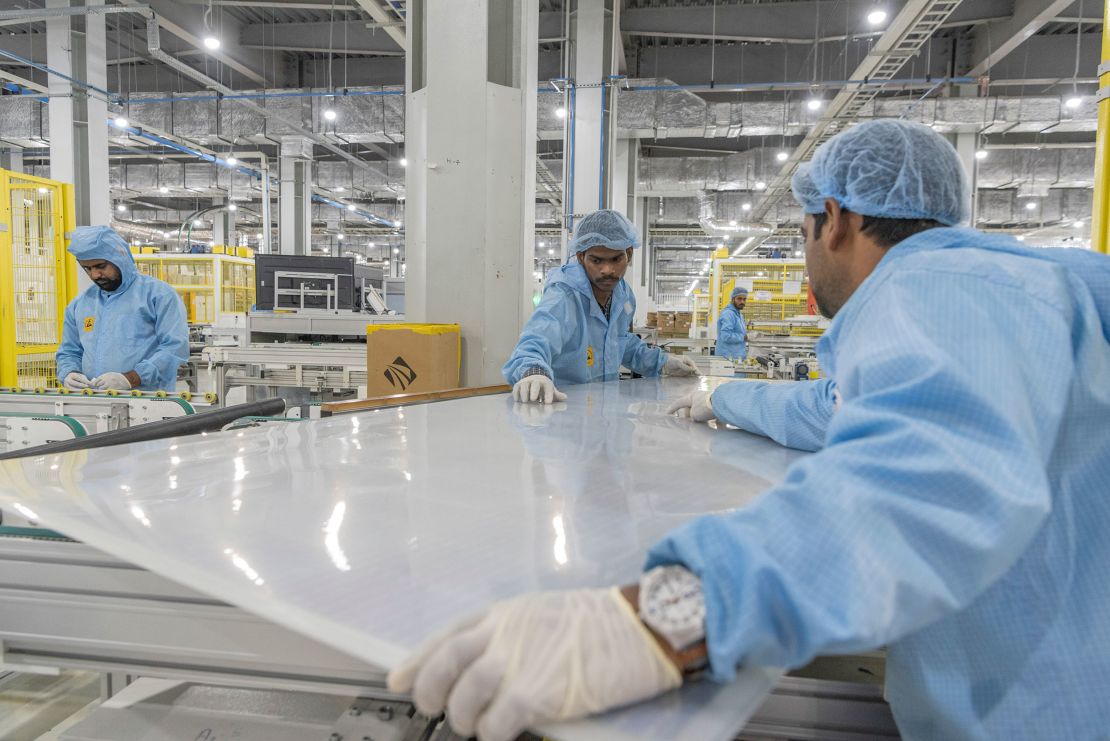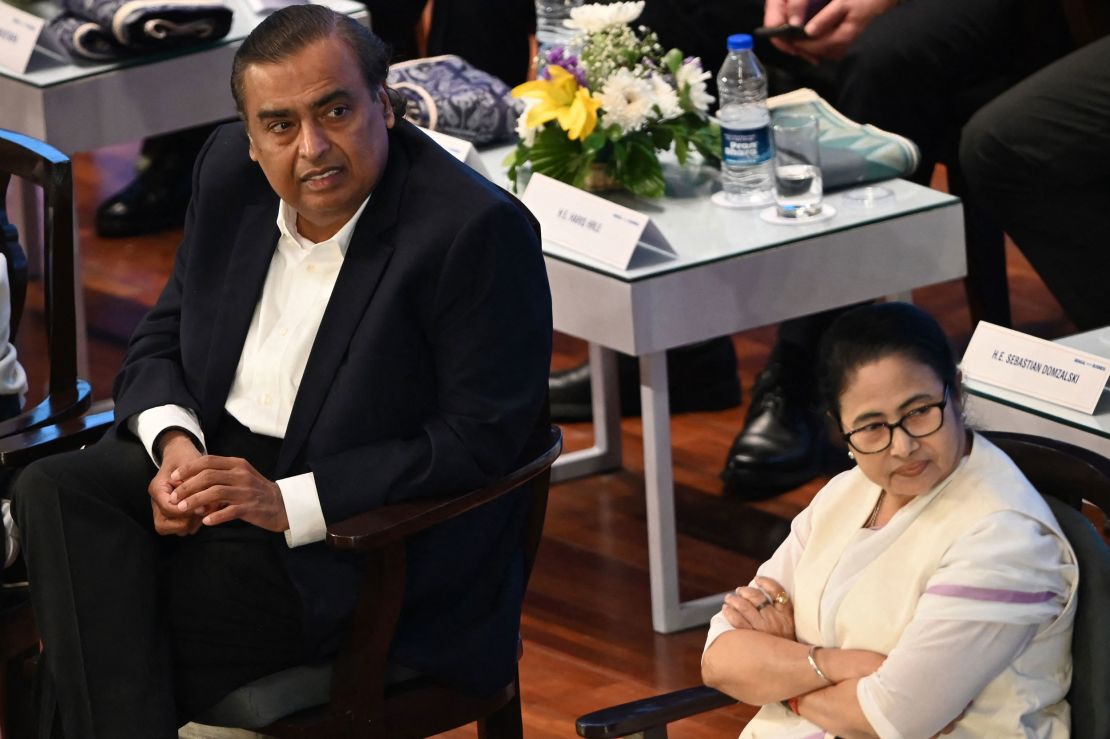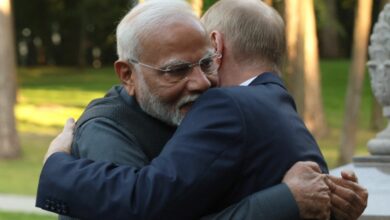
“On the one hand the rich look askance at our continuing poverty — on the other, they warn us against their own methods,” she told a United Nations event in Stockholm in 1972, the first global conference to make the environment a major issue.
“We do not wish to impoverish the environment any further and yet we cannot for a moment forget the grim poverty of large numbers of people,” she added.
Her words have never been more relevant. The tension between economic growth and environmental protection is at the heart of global discussions about how to tackle the ever accelerating climate crisis.
Addressing the opening session of the COP28 climate talks in Dubai on Friday, India’s current prime minister, Narendra Modi, said all developing countries must be given “a fair share in the global carbon budget” — the amount of planet-warming carbon pollution the world can emit and still avoid climate catastrophe.
Even though Earth is now heating up to dangerous levels, many governments around the world persist with viewing coal, oil and gas as sources of economic development, energy security and geopolitical power, the UN said this year.
As a result, the world’s fossil fuel production in 2030 is set to be more than twice the amount needed to limit the global temperature rise to 1.5 degrees Celsius above pre-industrial levels, the goal of the Paris climate agreement, a recent UN Environment Programme report found.
One of the major contributors to that disastrous overshoot will be India, which is burning ever greater amounts of coal and oil as it tries to meet the needs of its 1.4 billion people. It plans to double domestic coal production by 2030.
But even as the world’s most populous nation clings to coal with one hand, there are some signs that it is attempting to chart a more sustainable course with the other.
India has made “significant investments and set ambitious targets for renewable energy,” the UNEP report said, noting that the world’s fastest growing major economy has earmarked over $4 billion toward energy transition in this year’s national budget.
Other global agencies have also noted India’s growing ambitions in the pursuit of green energy. The Paris-based International Energy Agency said in a report in October that the country was “moving into a dynamic new phase in its energy development marked by a long-term net zero emissions ambition.”
In 2021, Modi pledged India would achieve net zero emissions by 2070, which is still a couple of decades later than developed economies.
Transforming India’s energy sector, like most things in the country, is going to be chaotic and muddled, but it will have far-reaching implications for the global energy market and the race to limit global warming.
“India’s net zero by 2070 target, if met in full and on time along with all respective national targets, will take the world to 1.7 degree Celsius global average surface temperature rise by 2100,” said Siddharth Singh, energy investment analyst at the IEA.
Getting there need not come at the cost of growth. Already there are “early signs of a gradually loosening link between economic development and carbon emissions,” said Singh.
If the country is able to meet its pledges, its carbon emissions will fall by over 40 percent by 2050, even as its GDP quadruples over this period, IEA said in its report.
Modern India is yet to be built
India is the world’s third-largest energy consuming country, although its energy use and emissions per person are less than half the world average, IEA data shows.
That could change rapidly. Thanks to rising incomes, energy demand has doubled since 2000, with 80 percent of demand still being met by coal, oil and solid biomass. Over the next three decades, the South Asian nation will see the largest energy demand growth of any country in the world, the IEA said.
That superlative isn’t surprising as the country is expected to achieve some impressive economic milestones. The world’s fifth largest economy is comfortably placed to grow at an annual rate of at least 6 percent in the coming few years, analysts say, and may become only the third country with annual GDP of $10 trillion by 2035.
And as it develops and modernizes, its urban population is going to shoot up, leading to a massive rise in the construction of homes, offices, shops and other buildings.
“India adds the equivalent of a London to its urban population every year for the next 30 years,” said Singh.
The Modi government is also trying to boost domestic manufacturing and that has unleashed a building boom, with everything from roads and bridges to ports and railways springing up around the country.
This infrastructure bonanza will lead to a surge in demand for coal and steel, which are huge sources of carbon emissions.
Electricity demand is also expected to skyrocket in the coming years because of factors ranging from improved standards of living to climate change. The latter has been fueling deadly heatwaves across India, and as a result, air conditioner ownership is set to see a sharp spike in the coming years.
By 2050, India’s total electricity demand from residential air conditioners is set to exceed the total energy consumption in the whole of Africa today, the IEA said this year.
Coal accounts for almost 70 percent of the country’s electricity generation and is not likely to change in the near future.

The future role of fossil fuels is one of the most controversial issues nations are grappling with at COP28. While some are pushing for a “phase-out,” others are calling for the weaker language of a “phase-down.”
India has said that the former option is not feasible at the moment. “We cannot phase out fossil fuels unless we have nuclear or until [energy] storage becomes viable,” India’s power minister R.K. Singh said last week, just days after he had said that the country won’t be rushed into reducing its use of coal.
“We are not going to do this … we are not going to compromise on availability of power for our growth, even if it requires that we add coal-based capacity,” the minister said in November.
Giant green goals
Still, the fact that India is developing at this point in history gives it a unique opportunity not to repeat the climate sins of wealthier nations.
The country was a reluctant signatory to the Paris climate accord in 2015, when more than 190 countries pledged to limit the precipitous rise in global temperatures to well below 2 degrees Celsius above pre-industrial levels, with a preferred goal of 1.5 degrees.
Those pledges haven’t yet been delivered. The world is careening toward nearly 3 degrees of global warming, even if current climate policies are met, the United Nations has warned.
The Modi government has set ambitious goals.
It has promised that renewable energy will fulfil 50 percent of India’s energy requirements by the end of this decade. The government also set a target of 500 GW of non-fossil fuel electricity generating capacity by that period — up from about 173 GW last year.

India has launched an incentive program to boost domestic manufacturing in critical sectors including solar modules and advanced chemistry cell batteries. If the program works, it could see India establish itself as a “reliable exporter” of solar modules, the IEA said in its 2023 report.
“The country already has the world’s fourth largest combined capacity for wind and solar PV electricity generation, and will be the third largest by next year,” Singh said. “In the context of its development journey, India’s clean energy targets are indeed impressive.”
If Asia’s third largest economy is able to meet its pledges, it would also offer a new roadmap to growth, one that allows developing countries to get rich and go green at the same time.
Green billionaires
Major conglomerates are keen to seize the green opportunity.
India’s richest men, including Mukesh Ambani and Gautam Adani, are investing billions into clean energy, even though they made their empire on the backs of fossil fuels.
“There has probably never been a better time than now for India to grow more sustainably,” said Tim Buckley director of Sydney-based think tank Climate Energy Finance.
That’s because of two main reasons: the world is seeing unprecedented levels of investment in clean technologies following Russia’s invasion of Ukraine and solar energy is getting significantly cheaper, he explained.
But there is still a big funding gap. The IEA has said that energy investments need to nearly triple by the end of this decade for India to be on a trajectory to meet its zero emission targets. The Modi government wants rich nations to do more when it comes to climate financing.

The developed world agreed more than a decade ago to transfer at least $100 billion a year to developing countries to help both with their green transitions and efforts to adapt to the climate crisis. That pledge was reaffirmed in the 2015 Paris Agreement, but the target has never been met.
In his speech to COP on Friday, Modi warned that “thinking only about one’s self interest will only lead the world into darkness.”
Hopefully, that message will be heard by India’s vast bureaucracy as well.
“We just need more departmental action and urgency filtering down with respect to the excellent renewables ambition of Modi,” said Buckley. “India needs to make sure there’s an alignment of the implementation so that those really ambitious targets are going to be met”




